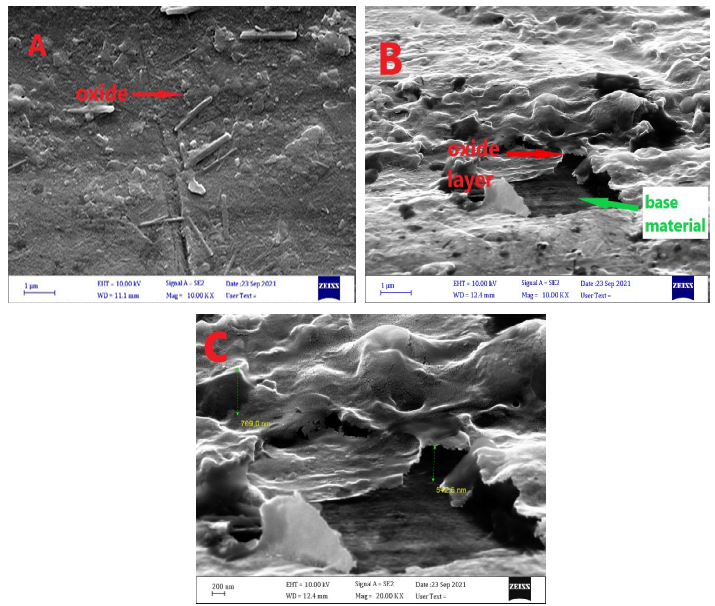Effect of laser cleaning parameters on aluminum 6061 surface properties
Main Article Content
Abstract
This study investigates the crucial factors influencing laser cleaning processes, with a primary focus on
aluminum 6061 surfaces. Laser power emerges as the central determinant, as higher power levels intensify the laser
matter interaction, leading to enhanced removal of oxide layers. A Microsecond fiber laser with a wavelength of 1064
nm was used in this study to identify optimal cleaning conditions, comprising parameters such as 3W power, a hatch
value of 0.003, a speed of 150 mm/s, and a spot size of 200 µm. Furthermore, the research uncovers intriguing insights
into the impact of cleaning speed on oxygen levels, revealing that higher speeds result in increased oxygen levels due
to dual heat sources—laser beam and heat transfer from adjacent cleaned lines. The hatch parameter's role is
highlighted in controlling the overlapping ratio, where closer line spacing leads to more effective cleaning and reduced
surface oxygen content, while wider line spacing impedes cleaning between lines. Additionally, the study explores
the potential enhancement of wear rates through laser cleaning, with material roughness playing a critical role, and
notes that cleaned samples exhibit fewer defects in their microstructure compared to their uncleaned counterparts.
These findings contribute valuable insights to the field of laser cleaning and its applications in surface treatment and
material quality improvement.
Received 4 Oct.2023; Revised 14 Nov. 2023;Accepted 14 Nov. 2023; Published online 15 Jun. 2024




